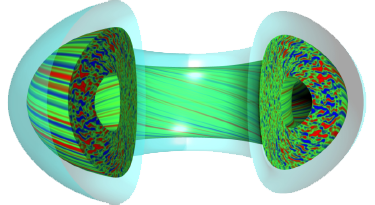Speaker
Description
Controlling impurity ions is a critical requirement for a fusion reactor. Impurity accumulation in the core region dilutes fuel and radiates away power through line emission and enhanced Bremsstrahlung. However, a proper amount of impurity is likely to be required in the edge region in order to mitigate the heat load on the plasma facing components.
The transport properties of impurity ions are often experimentally characterized by using a diffusion coefficient D and a convection velocity v. Since the realistic experimental setups usually necessitate the determination of D and v under ill-posed conditions, rigorous comparisons between simulations and experiments cannot be made without addressing the model selection and uncertainty estimation problems. To this end, the Bayesian formalism has been applied to the impurity transport studies in recent years.
In this contribution, a non-parametric inference of impurity transport coefficients by using charge exchange recombination spectroscopy measurements of Ne X, Ne VIII, O VIII, and C VI lines is presented for the first time. Due to their close atomic numbers, neon, oxygen and carbon impurity ions are assumed to have the same diffusion coefficient D and convection velocity v. In order to reduce a large computational cost, which a non-parametric approach typically entails, an analytical steady state solution for impurity profiles for given background plasma parameters and transport coefficients is derived. Since the ratio of v to D only describes the equilibrated profile of the sum of all impurity charge states, steady-state measurements can still decouple D and v if different charge states are simultaneously observed. A non-parametric analysis framework based on the Bayesian probability theory is formulated, and transport coefficient measurements for a Type III ELMy H-mode plasma at ASDEX Upgrade are conducted. The charge exchange reactions with the background neutrals, which are known to affect the impurity charge state balance, are taken into account by introducing additional free parameters. Unlike spline functions, the non-parametric inference does not reduce the degrees of freedom for representing spatial profiles. Thus, all solutions that are consistent with the measurements and the prescribed smoothing conditions can be calculated. D ∼30 m/s^2 and v ∼ 120 m/s are inferred right inside the pedestal top.
| Country or International Organisation | Germany |
|---|---|
| Affiliation | IPP |

